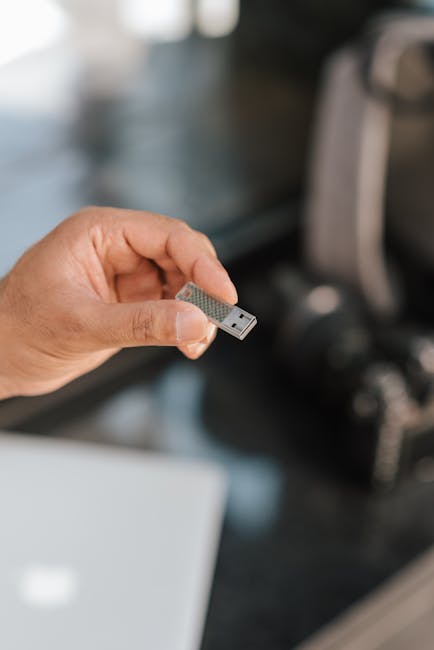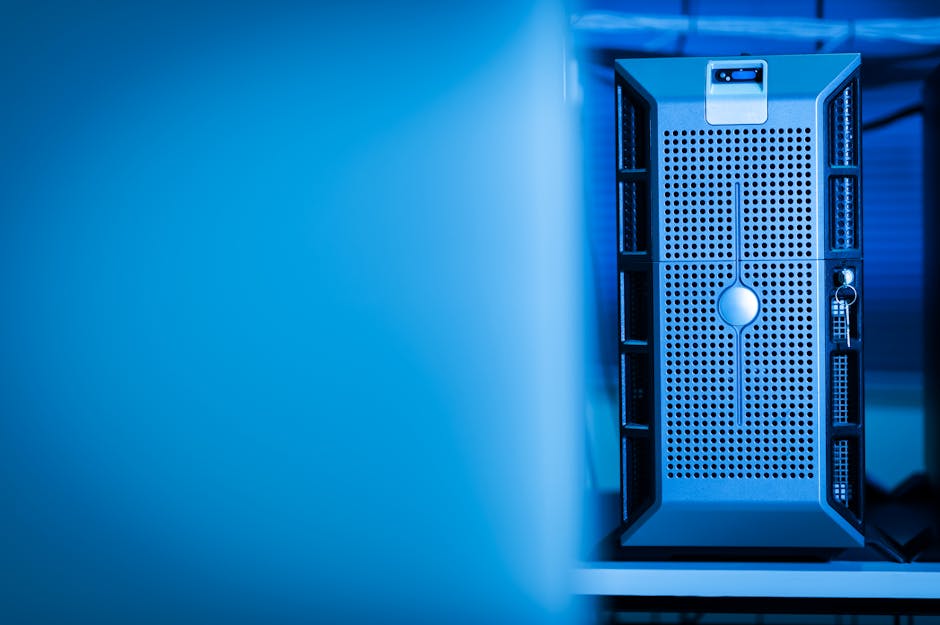Unlock encrypted content
Please enter your SSCE key to initiate on-the-fly decryption.
Decryption key: (Click cancel if you don't have the key)
Copied link to clipboard.
This feature is unavailable for free accounts. Upgrade now and enjoy all Premium benefits.
Go Premium!
This feature is unavailable for free accounts. Upgrade now and enjoy all Premium benefits.
Go Premium!
Please open this page in browser ( Google Chrome or Safari ) to use this feature.
Open In Browser
Nanomedicine: Exploring the Future of Healthcare
Random related video for this blog.
Copied share link to clipboard.
With its ability to manipulate matter at the nanoscale, nanomedicine offers promising solutions for diagnosing, treating, and preventing diseases. In this article, we will delve into the world of nanomedicine and explore its potential in transforming the future of healthcare.
Understanding Nanomedicine
Nanomedicine involves the use of nanoscale materials and devices to enhance medical treatments and interventions. By working at the molecular and cellular levels, nanomedicine enables precise targeting of diseased cells and tissues, minimizing side effects and maximizing therapeutic outcomes. Nanoparticles, nanorobots, and other nanoscale tools are designed to interact with biological systems at their fundamental level, opening up new possibilities for personalized medicine. One area where nanomedicine shows great promise is in drug delivery. Traditional drug delivery methods often result in poor bioavailability and systemic toxicity. Nanoparticles can be engineered to encapsulate drugs, delivering them directly to the site of action and improving their efficacy. These nanoparticles can also be functionalized with targeting ligands, allowing them to selectively bind to specific cells or tissues. This targeted approach reduces off-target effects and enhances the therapeutic index of drugs.Exploring the Potential of Explainable AI in Nanomedicine
Explainable AI (XAI) is an emerging field that aims to make artificial intelligence more transparent and understandable to humans. In the context of nanomedicine, XAI holds great potential in improving the safety and effectiveness of nanoscale interventions. By providing insights into the decision-making process of AI algorithms, XAI can enhance the trust and acceptance of nanomedicine technologies among healthcare professionals and patients. One of the key challenges in nanomedicine is the potential toxicity of nanomaterials. While nanomaterials offer unique properties for biomedical applications, their interactions with biological systems are not fully understood. XAI can help shed light on the underlying mechanisms of nanomaterial toxicity by providing interpretable models and explanations for AI predictions.This knowledge can guide the design and development of safer nanomedicine interventions. Furthermore, XAI can help optimize the design of nanomaterials for specific applications. By analyzing large datasets and complex relationships between nanomaterial properties and biological responses, AI algorithms can generate valuable insights. XAI can then provide explanations for these insights, allowing researchers to understand the rationale behind AI-driven design decisions. This iterative process can lead to the development of more effective and targeted nanomedicine interventions.
Transhumanism: Bridging the Gap Between Humans and Technology
Transhumanism, a philosophical movement that advocates for the enhancement of human capabilities through technology, is gaining traction in the field of healthcare. With advances in nanomedicine and other emerging technologies, transhumanism offers the possibility of augmenting human abilities, extending lifespan, and improving overall well-being. However, it also raises ethical and societal considerations that need to be carefully addressed. One of the key areas where transhumanism intersects with nanomedicine is in the development of implantable devices and prosthetics. Nanotechnology enables the creation of miniaturized sensors and actuators that can be integrated with the human body, enhancing sensory perception and motor control. For example, nanoscale electrodes can be used to restore vision in individuals with retinal degeneration or improve motor function in patients with spinal cord injuries. Li-Fi (Light Fidelity): Illuminating the Future of Wireless Communication Li-Fi, or Light Fidelity, is a wireless communication technology that utilizes light waves to transmit data. Unlike traditional Wi-Fi, which uses radio waves, Li-Fi offers faster data transfer rates and increased security. By modulating the intensity of light emitted by LED bulbs, Li-Fi can transmit information to photodetectors, enabling high-speed wireless communication in environments where radio signals may be limited or congested. Server Side Encryption: Safeguarding Your Data in the Digital Age In today's digital age, data security is of utmost importance. Server Side Encryption (SSE) is a method of encrypting data at rest on servers, ensuring that sensitive information remains protected from unauthorized access. By encrypting data before it is stored, SSE provides an additional layer of security, even if the server is compromised. This is particularly crucial for healthcare organizations and other industries that handle sensitive patient information. Organize Your Folders and Files: The Key to Efficient Data Management In a world where digital information is constantly growing, organizing your folders and files is essential for efficient data management. By implementing a systematic approach to file organization, you can save time, improve productivity, and reduce the risk of losing important data. Whether you choose to organize your files chronologically, by project, or by topic, having a well-structured filing system will enhance your workflow and make information retrieval a breeze. Robot Rebellion: Separating Fact from Fiction The idea of a robot rebellion, where artificial intelligence surpasses human intelligence and takes control, has been a popular theme in science fiction. However, the reality is far from this dystopian vision. While AI and robotics are advancing rapidly, they still rely on human programming and oversight. As long as ethical guidelines and safety measures are in place, there is no reason to fear a robot rebellion. Instead, we should focus on leveraging AI and robotics to improve various aspects of our lives, including healthcare, transportation, and manufacturing. Advanced Driver Assistance Systems (ADAS): Enhancing Road Safety Advanced Driver Assistance Systems (ADAS) are technologies designed to assist drivers in the driving process and enhance overall road safety. From lane departure warnings to adaptive cruise control, ADAS uses sensors, cameras, and AI algorithms to monitor the environment and provide real-time feedback to drivers. By augmenting human capabilities, ADAS can reduce the risk of accidents and improve the overall driving experience. Conclusion As we embrace the future of healthcare, nanomedicine, explainable AI, transhumanism, Li-Fi, server-side encryption, efficient data management, and advanced driver assistance systems are set to play pivotal roles in transforming the way we live and interact with technology. From personalized medicine to safer and more efficient communication systems, these advancements offer exciting possibilities for improving our health, safety, and overall well-being. By harnessing the power of these technologies and addressing the ethical and societal implications, we can shape a future where technology and humanity coexist harmoniously.Frequently Asked Questions (FAQs)
Question: What is nanomedicine? Answer:
Nanomedicine is a field that combines nanotechnology and medicine to develop innovative solutions for diagnosing, treating, and preventing diseases. It involves the use of nanoscale materials and devices to interact with biological systems at a molecular level, enabling precise targeting and enhanced therapeutic outcomes.
Question: How can explainable AI benefit nanomedicine? Answer:
Explainable AI (XAI) can enhance the safety and effectiveness of nanomedicine by providing insights into the decision-making process of AI algorithms. XAI can help understand the mechanisms of nanomaterial toxicity and optimize the design of nanomaterials for specific applications, leading to safer and more targeted interventions.
Question: What is Li-Fi? Answer:
Li-Fi, or Light Fidelity, is a wireless communication technology that uses light waves to transmit data. By modulating the intensity of light emitted by LED bulbs, Li-Fi can achieve faster data transfer rates and increased security compared to traditional Wi-Fi, which uses radio waves.
Case Study: Transforming Healthcare with Nanomedicine In a recent case study, researchers at a leading medical institution utilized nanomedicine to develop a targeted drug delivery system for cancer treatment. By encapsulating chemotherapy drugs within biocompatible nanoparticles, the researchers were able to deliver the drugs directly to tumor cells, minimizing systemic toxicity and improving treatment efficacy. The nanomedicine approach showed promising results in preclinical studies, with a significant reduction in tumor size and improved patient outcomes. This case study highlights the potential of nanomedicine in revolutionizing cancer treatment and personalized medicine.
By Amelia Isabella file transfer ftp backup upload video auto camera upload cloud storage online backup encryption file sharing large files transfer upload files share file photo upload video sharing site free file upload
Email: [email protected]
Related
Collaborative Video Editing, Mind Uploading, and Li-Fi: Transforming Data Management...
July 16, 2023
Read More
Futuristic Transportation and Machine Learning Revolutionizing Data Storage and Security
July 16, 2023
Read More
Blockchain Technology and Immersive Media Storage: Revolutionizing Data Sharing and...
July 16, 2023
Read More
Data Accessibility on the Go: Exploring Technological Advancements in Cognitive...
July 16, 2023
Read More
Popular
Latest
The Future of Digital Transformation: Exploring Smart Homes, Efficient File...
November 30, 2025
Read More
Exploring the Benefits of Cloud Storage and Innovative Technologies in...
November 26, 2025
Read More
The Future of Technology: Exploring Biohacking, Space Tourism, and Digital...
November 23, 2025
Read More
The Future of File Sharing: Streamlined Workflows for Photographers and...
November 19, 2025
Read More
Exploring the Intersection of Technology: From Cybersecurity to Augmented Reality...
November 16, 2025
Read More
The Future of File Management: Embracing Edge Computing and Efficient...
November 12, 2025
Read More
The Future of File Sharing: Exploring User-Friendly Solutions and Data...
November 5, 2025
Read More
The Future of Cloud Storage: How FileLu Empowers Creative Professionals...
November 2, 2025
Read More
The Future of Autonomous Technologies: Innovations in Robotics, File Sharing,...
October 29, 2025
Read More
Emerging Technologies Revolutionizing File Management: From Li-Fi to Robust Collaboration...
October 26, 2025
Read More
Emerging Technologies: Exploring the Impact of File Access Auditing, Genetic...
October 19, 2025
Read More
The Future of Data Storage: Exploring Advanced Encryption, Mobile Integration,...
October 5, 2025
Read More
Exploring the Future of Data Management: Security, Efficiency, and Cognitive...
September 28, 2025
Read More
Revolutionizing Data Management: Innovations in Storage, Security, and Sustainable Technology.
September 24, 2025
Read More




















